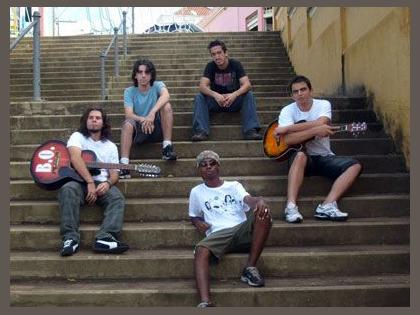 Bo
Bo
Bo: A Saga of Music, Controversy, and Addiction
In the vibrant tapestry of Brazilian music, the band Bo emerges as a compelling narrative of artistic brilliance marred by personal struggles and societal censure.
The Music: A Symphony of Raw Emotion
Bo's music, epitomized by the powerful anthem "Drogas e Vícios," is a raw and unflinching exploration of addiction, poverty, and the complexities of human existence. Their lyrics, penned by enigmatic frontman Rodrigo Amarante, cut through the fabric of society with searing honesty, capturing the despair and resilience of the disenfranchised.
The Members: A Collective of Creative Souls
* Rodrigo Amarante: The enigmatic and charismatic vocalist, songwriter, and guitarist whose lyrics and melodies form the heart of Bo's sound.
* Henrique Amarante: Rodrigo's brother, a skilled guitarist and producer who shapes the band's sonic tapestry.
* Bernardo Cunha: A versatile multi-instrumentalist who adds depth and texture to Bo's arrangements.
The Challenges: Navigating Personal Demons
Throughout their career, Bo has grappled with the shadow of addiction, both within the band and in their personal lives. Rodrigo Amarante's struggles with substance abuse have been well-documented, and the band's music often reflects the pain and desperation of his experiences.
The Controversies: Crossing the Line
Bo's unflinching depiction of addiction has stirred controversy and raised questions about the band's responsibility as artists. Some critics have accused them of glorifying drug use, while others applaud their fearless portrayal of a prevalent societal issue.
The Discography: A Legacy of Raw Authenticity
* 2006: Bo (debut album)
* 2007: A Vida e os Sonhos (EP)
* 2008: Deixo o Meu Bem (EP)
* 2010: Bo no Cine Joia (live album)
* 2012: Doce Guerra (final album)
The Legacy: A Complex and Compelling Tale
Bo's music continues to resonate with audiences around the world, a testament to their raw authenticity and the universal appeal of their message. Their story is a complex and often painful one, but it is also a testament to the resilience of the human spirit and the transformative power of art.
In the vibrant tapestry of Brazilian music, the band Bo emerges as a compelling narrative of artistic brilliance marred by personal struggles and societal censure.
The Music: A Symphony of Raw Emotion
Bo's music, epitomized by the powerful anthem "Drogas e Vícios," is a raw and unflinching exploration of addiction, poverty, and the complexities of human existence. Their lyrics, penned by enigmatic frontman Rodrigo Amarante, cut through the fabric of society with searing honesty, capturing the despair and resilience of the disenfranchised.
The Members: A Collective of Creative Souls
* Rodrigo Amarante: The enigmatic and charismatic vocalist, songwriter, and guitarist whose lyrics and melodies form the heart of Bo's sound.
* Henrique Amarante: Rodrigo's brother, a skilled guitarist and producer who shapes the band's sonic tapestry.
* Bernardo Cunha: A versatile multi-instrumentalist who adds depth and texture to Bo's arrangements.
The Challenges: Navigating Personal Demons
Throughout their career, Bo has grappled with the shadow of addiction, both within the band and in their personal lives. Rodrigo Amarante's struggles with substance abuse have been well-documented, and the band's music often reflects the pain and desperation of his experiences.
The Controversies: Crossing the Line
Bo's unflinching depiction of addiction has stirred controversy and raised questions about the band's responsibility as artists. Some critics have accused them of glorifying drug use, while others applaud their fearless portrayal of a prevalent societal issue.
The Discography: A Legacy of Raw Authenticity
* 2006: Bo (debut album)
* 2007: A Vida e os Sonhos (EP)
* 2008: Deixo o Meu Bem (EP)
* 2010: Bo no Cine Joia (live album)
* 2012: Doce Guerra (final album)
The Legacy: A Complex and Compelling Tale
Bo's music continues to resonate with audiences around the world, a testament to their raw authenticity and the universal appeal of their message. Their story is a complex and often painful one, but it is also a testament to the resilience of the human spirit and the transformative power of art.